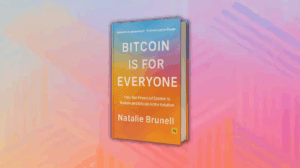
Understanding the Risks of Token Staking
Institutional investors looking to earn rewards from digital asset token staking must be aware of the associated risks, according to Andrew McFarlane, CTO at Validation Cloud. One particular risk that asset managers should be cautious of is slashing, which is a penalty imposed on tokens staked on a validator who violates the network's rules.
To minimize the impact of rogue validators, asset managers should choose experienced validators who have a proven track record. McFarlane advises asset managers to engage staking-as-a-service providers that offer strong security measures and slashing insurance.
The Importance of Audited Staking Platforms
Asset managers can also provide reassurance to their clients by selecting audited staking platforms. These platforms receive SOC2 Type 1 or Type 2 attestation reports, which demonstrate their compliance with industry standards. While both types of attestation are valuable, McFarlane believes that SOC2 Type 1 provides a better report.
The Ethereum Network's Staking Ratio
When asked about the relatively low staking ratio on the Ethereum network, McFarlane explains that this is due to the complete staking mechanism becoming effective after the Shapella upgrade in April. Since the upgrade, there has been a significant increase in staked Ethereum, with over 50% growth in the last six months.
What is Staking-as-a-Service?
Staking-as-a-Service allows asset managers to support the operations of a blockchain network without the need to manage the infrastructure themselves. In return, asset managers earn rewards generated by the network. The key feature of a Staking-as-a-Service solution is the ability to provide this service without taking custody of the tokens, which distinguishes it from other staking protocols like Lido or centralized exchanges.
For institutional asset managers, Staking-as-a-Service offers the advantage of complying with strict obligations to hold assets with qualified custodians and work with SOC2-compliant partners. This allows asset managers to keep their tokens in a custodian while benefiting from secure and compliant infrastructure.
Managing Risks in Staking
The main risk in Proof of Stake (PoS) networks is slashing, where tokens staked on a validator who violates network rules can be penalized. To mitigate this risk, asset managers should choose Staking-as-a-Service providers with strong security measures and slashing insurance. Experienced operators can significantly reduce the likelihood of slashing events.
The Benefits of Validation Cloud's Platform
Validation Cloud's institutional staking-as-a-service platform offers on-demand deployment and rewards automation. On-demand deployment allows asset managers to quickly and easily participate in staking without the burden of managing infrastructure. Rewards automation simplifies the process by using on-chain smart contracts, eliminating intermediaries and counterparty risk.
The Importance of SOC2 Compliance
Validation Cloud's staking platform is SOC2 Type 1 compliant, which demonstrates their commitment to compliance and security. SOC2 defines criteria for managing customer data, including security, availability, integrity, confidentiality, and privacy. Type 1 certification focuses on security controls at a specific point in time, while Type 2 certification covers controls over a period of time.
Validation Cloud's SOC2 Type 2 observation period will conclude at the end of 2023, further ensuring the security and compliance of their platform.
The Future of Staking on the Ethereum Network
Ethereum's relatively low staking ratio is a result of the complete staking mechanism becoming effective only after the Shapella upgrade. However, institutional adoption of staking has led to significant growth in staked Ethereum in recent months. As more institutional investors recognize the benefits of staking, the staking ratio on the Ethereum network is likely to increase.
What are your thoughts on digital asset token staking for institutional investors? Let us know in the comments section below.
Frequently Asked Questions
Who holds the gold in a gold IRA?
An individual who has gold is considered to be a “form of money” by the IRS and subject to taxation.
You must have at least $10,000 in gold and keep it for at most five years to qualify for this tax-free status.
Gold can be used to protect against inflation and price volatility. However, it is not a good idea to own gold if you don't intend to use it.
If you are planning to sell your gold someday, it is necessary that you report its value. This can affect the capital gains taxes that you owe when cashing in on investments.
You should consult a financial planner or accountant to see what options are available to you.
Can I buy gold with my self-directed IRA?
However, gold can only be purchased with your self-directed IRA. To do so, you must first open a brokerage account at TD Ameritrade. If you already have a retirement account, funds can be transferred to it.
Individuals can contribute as much as $5,500 per year ($6,500 if married filing jointly) to a traditional IRA. Individuals are allowed to contribute $1,000 each ($2,000 if married or filing jointly) to a Roth IRA.
If you do decide that you want to invest, it is a good idea to buy physical bullion and not in futures. Futures contracts can be described as financial instruments that are determined by the gold price. They allow you to speculate on future prices without owning the metal itself. Physical bullion, however, is real gold and silver bars that you can hold in your hand.
Should You Purchase Gold?
Gold was considered a safety net for investors during times of economic turmoil in the past. Many people today are moving away from stocks and bonds to look at precious metals, such as gold, as a way to diversify their investments.
While gold prices have been rising in recent years they are still low relative to other commodities, such as silver and oil.
Experts believe this could change soon. Experts predict that gold prices will rise sharply in the wake of another global financial collapse.
They also note that gold is increasingly popular because of its perceived intrinsic value and potential return.
If you are considering investing in gold, here are some things that you need to keep in mind.
- Consider first whether you will need the money to save for retirement. You can save for retirement and not invest your savings in gold. Gold does offer an extra layer of protection for those who reach retirement age.
- You should also be aware of what you are getting into before you buy gold. There are many types of gold IRA accounts. Each type offers varying levels and levels of security.
- Remember that gold is not as safe as a bank account. If you lose your gold coins, you may never recover them.
So, if you're thinking about buying gold, make sure you do your research first. If you already have gold, make sure you protect it.
How Much of Your IRA Should Include Precious Metals?
The most important thing you should know when investing in precious metals is that they are not just for wealthy people. They don't require you to be wealthy to invest in them. You can actually make money without spending a lot on gold or silver investments.
You could also consider buying physical coins like bullion bars, rounds or bullion bars. Shares in precious metals-producing companies could be an option. Or, you might want to take advantage of an IRA rollover program offered by your retirement plan provider.
You'll still get the benefit of precious metals no matter which country you live in. Even though they aren't stocks, they still offer the possibility of long-term growth.
And, unlike traditional investments, their prices tend to rise over time. You'll probably make more money if your investment is sold down the line than traditional investments.
Statistics
- Indeed, several financial advisers interviewed for this article suggest you invest 5 to 15 percent of your portfolio in gold, just in case. (aarp.org)
- Contribution limits$6,000 (49 and under) $7,000 (50 and up)$6,000 (49 and under) $7,000 (50 and up)$58,000 or 25% of your annual compensation (whichever is smaller) (lendedu.com)
- (Basically, if your GDP grows by 2%, you need miners to dig 2% more gold out of the ground every year to keep prices steady.) (smartasset.com)
- If you take distributions before hitting 59.5, you'll owe a 10% penalty on the amount withdrawn. (lendedu.com)
- If you accidentally make an improper transaction, the IRS will disallow it and count it as a withdrawal, so you would owe income tax on the item's value and, if you are younger than 59 ½, an additional 10% early withdrawal penalty. (forbes.com)
External Links
forbes.com
- Gold IRA: Add some sparkle to your retirement nest egg
- Understanding China's Evergrande Crisis – Forbes Advisor
investopedia.com
- Are You a Good Candidate for a Gold IRA
- What are the Options Types, Spreads, Example, and Risk Metrics
wsj.com
- Saddam Hussein's Invasion Helped Uncage a Bear In 1990 – WSJ
- Do you want to keep your IRA gold at home? It's Not Exactly Legal – WSJ
irs.gov
How To
Tips for Investing In Gold
Investing in Gold is a popular investment strategy. Because investing in gold has many benefits. There are many options for investing in gold. There are many ways to invest in gold. Some prefer buying physical gold coins while others prefer gold ETFs (Exchange Traded Funds).
Before buying any type gold, it is important to think about these things.
- First, make sure you check if your country allows you own gold. If your country allows you to own gold, then you are allowed to proceed. If not, you may want to consider purchasing gold from overseas.
- The second thing you need to do is decide what type of gold coins you want. You can go for yellow gold, white gold, rose gold, etc.
- You should also consider the price of gold. Start small and move up. You should diversify your portfolio when buying gold. Diversifying your portfolio includes stocks, bonds, mutual funds, real estate, commodities, and mutual funds.
- Last but not least, remember that gold prices fluctuate frequently. You need to keep up with current trends.
—————————————————————————————————————————————————————————————-
Based on [POSTTITLE]
by [POSTAUTHOR]


















